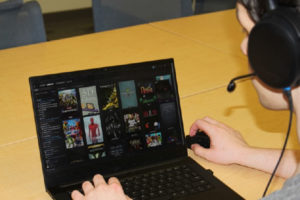
Freshman Chris Goodwin, a competitive gamer, will be one of the first students to try out for UMW’s growing esports program, which was unveiled last month. Short for “electronic sports,” esports involves teams competing against each other in video game tournaments both face-to-face and virtually.
University of Mary Washington students are used to going ballistic over an at-the-buzzer 3-pointer or a fast-as-lightning volleyball spike in a brightly illuminated Anderson Center. But how do offense and defense play out in a dimly lit room with video consoles – and mashing and peeling and speed-boosts?
Get ready, UMW. Esports is on the way, and it’s revolutionizing preconceived notions about collegiate athletics. The cyber sport joins Mary Washington’s 19 NCAA sponsored sports and two team sports, as a third team sport. And it’s open to everyone, regardless of physical prowess.
“There’s a real sense of community around esports … an inclusive nature about it,” said UMW Assistant Athletic Director Caitlin Moore, who played a critical role in the development of Mary Washington’s esports program, unveiled last month. “Esports is not going away,” she said. “It will only grow.”
Having expanded globally over the last decade, esports, short for “electronic sports,” involves teams competing against each other in video game tournaments both face-to-face and virtually. Statistics show that video gaming is a bigger business than ever, eclipsing movies and music combined, with revenue around $60 billion worldwide and burgeoning. Read more.